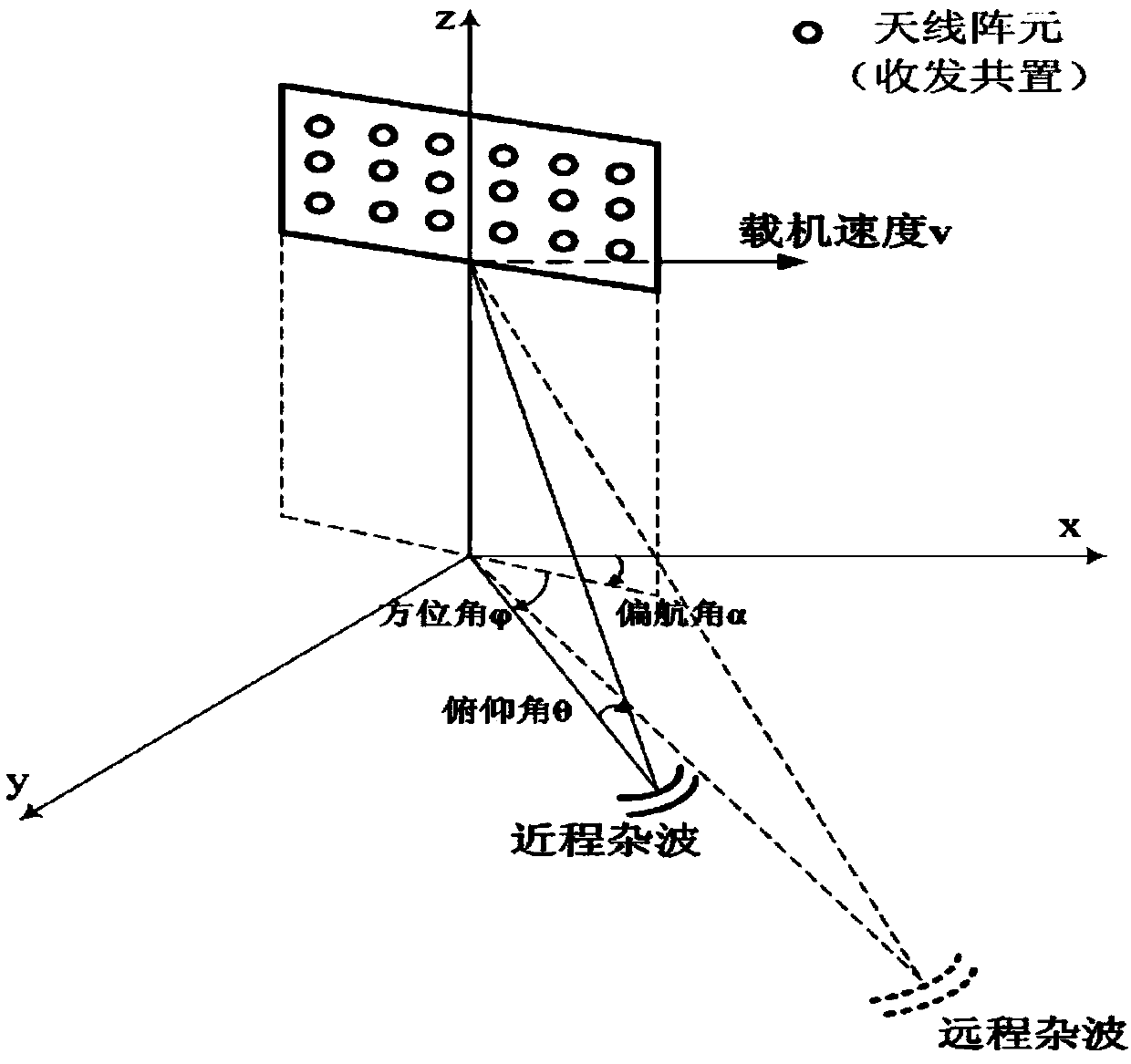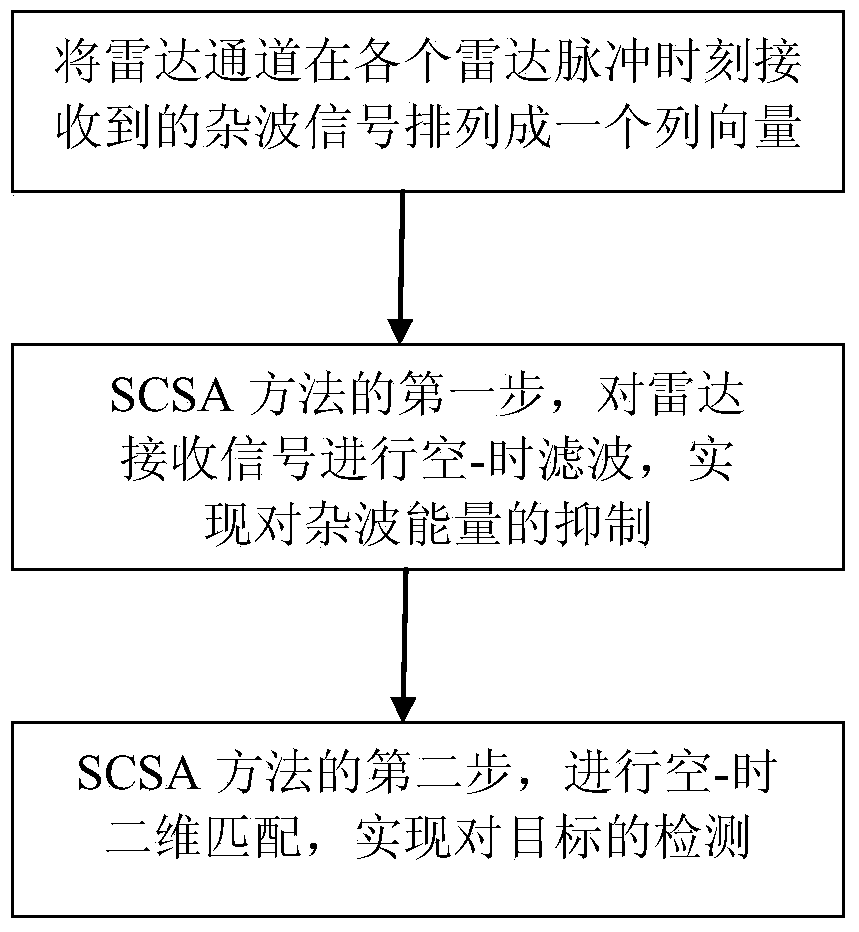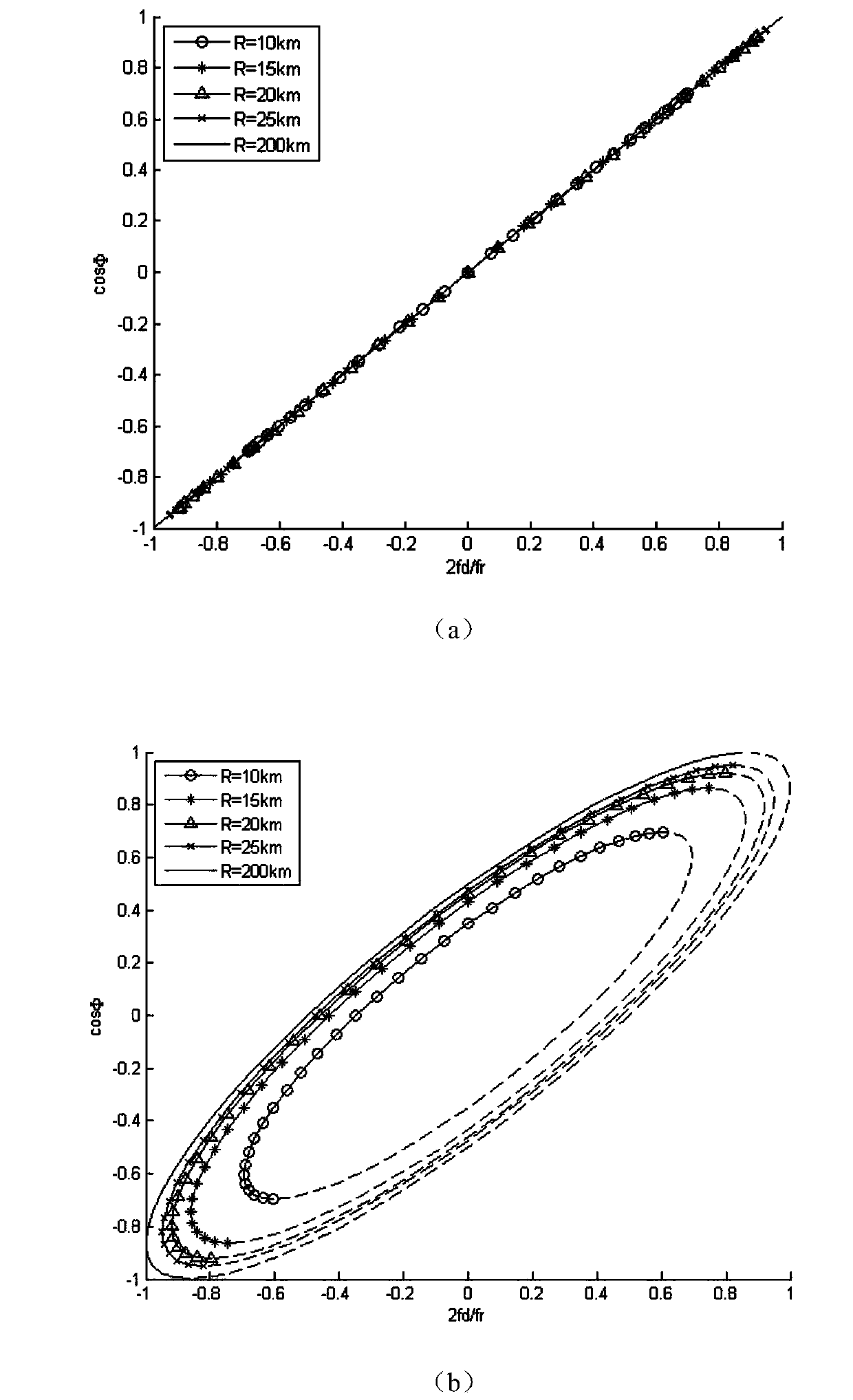Non-adaptive airborne non-side-looking radar short-range clutter suppression method
A short-range clutter, non-adaptive technology, applied in radio wave measurement systems, instruments, etc., can solve the problems of a large number of independent and identically distributed training samples of the covariance matrix, inability to effectively suppress short-range clutter, and high computational complexity , to achieve the effect of small amount of calculation, which is conducive to real-time processing
- Summary
- Abstract
- Description
- Claims
- Application Information
AI Technical Summary
Problems solved by technology
Method used
Image
Examples
Embodiment Construction
[0019] The implementation process of the method of the present invention will be described below with reference to the accompanying drawings.
[0020] In order to better understand the present invention, the clutter model of the non-side-looking radar is introduced first. figure 1 It is the clutter model diagram of the non-side-looking radar. The M×N planar array is installed on the carrier aircraft, the antennas are co-located for transmitting and receiving, and the intervals between the M×N antennas in the row and column directions are both d. If M array elements in each column are combined by microwave, N synthesis channels can be obtained. The N synthesis channels can be regarded as N uniform linear arrays, which are parallel to the ground ( figure 1 xoy plane in ). Let the working wavelength of the radar be λ, and the pulse repetition frequency be f r . Within a coherent processing interval, K pulses are coherently accumulated. Assume that the carrier plane is fly...
PUM
 Login to View More
Login to View More Abstract
Description
Claims
Application Information
 Login to View More
Login to View More - R&D
- Intellectual Property
- Life Sciences
- Materials
- Tech Scout
- Unparalleled Data Quality
- Higher Quality Content
- 60% Fewer Hallucinations
Browse by: Latest US Patents, China's latest patents, Technical Efficacy Thesaurus, Application Domain, Technology Topic, Popular Technical Reports.
© 2025 PatSnap. All rights reserved.Legal|Privacy policy|Modern Slavery Act Transparency Statement|Sitemap|About US| Contact US: help@patsnap.com



